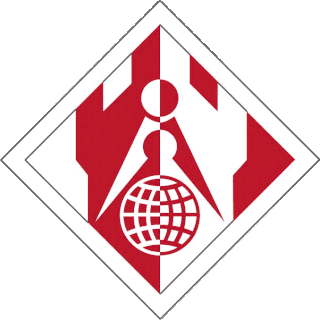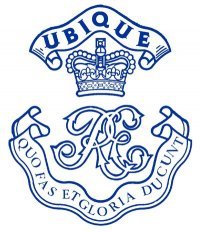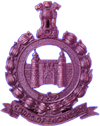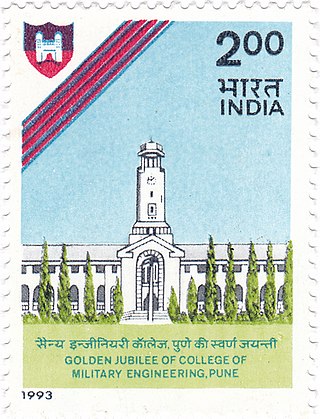
The United States Army Corps of Engineers (USACE) is a direct reporting unit and engineer formation of the United States Army that has three primary mission areas: Engineer Regiment, military construction, and civil works. The day-to-day activities of the three mission areas are administered by a lieutenant general known as the chief of engineers/commanding general. The chief of engineers commands the Engineer Regiment, comprising combat engineer, rescue, construction, dive, and other specialty units, and answers directly to the Chief of Staff of the Army. Combat engineers, sometimes called sappers, form an integral part of the Army's combined arms team and are found in all Army service components: Regular Army, National Guard, and Army Reserve. Their duties are to breach obstacles; construct fighting positions, fixed/floating bridges, and obstacles and defensive positions; place and detonate explosives; conduct route clearance operations; emplace and detect landmines; and fight as provisional infantry when required. For the military construction mission, the chief of engineers is directed and supervised by the Assistant Secretary of the Army for installations, environment, and energy, whom the President appoints and the Senate confirms. Military construction relates to construction on military bases and worldwide installations.

The Border Roads Organisation (BRO) is a statutory body under the ownership of the Ministry of Defence of the Government of India. BRO develops and maintains road networks in India's border areas and friendly neighboring countries. This includes infrastructure operations in 19 states and three union territories and neighboring countries such as Afghanistan, Bhutan, Myanmar, Tajikistan and Sri Lanka. By 2022, BRO had constructed over 55,000 kilometres (34,000 mi) of roads, over 450 permanent bridges with a total length of over 44,000 metres (27 mi) length and 19 airfields in strategic locations. BRO is also tasked with maintaining this infrastructure including operations such as snow clearance.

The Engineer and Logistic Staff Corps is a part of the Royal Engineers in the British Army Reserve. It is intended to provide advisers on engineering and logistics to the British Army at a senior level. Following its work creating the NHS Nightingale Hospitals the Corps was described as 'probably the greatest military unit you've never heard of'.
The Indian Defence services have established numerous academies and staff colleges across India for the purpose of training professional soldiers in military sciences, warfare command and strategy, and associated technologies.
The Indian Railway Service of Mechanical Engineering, abbreviated as IRSME, is one of the group 'A' central engineering services of the Indian railways. The officers of this service are responsible for managing the Mechanical Engineering Division of the Indian Railways. Till 2019, IRSME officers were drawn from the Combined Engineering Service Examination (ESE) and Special Class Railway Apprentice (SCRA) examination conducted by Union Public Service Commission. All appointments to the Group 'A' services are made by the president of India.
The Engineering Services Examination (ESE) is an annual combined standardized exam conducted by the Union Public Service Commission (UPSC) to recruit officers to various engineering services under the Government of India. It is held in four categories: Civil, Mechanical, Electrical, and Electronics & Telecommunication. The exam has three stages comprising objective, subjective and personality tests. The various services are often informally known as Indian Engineering Services (IES).
The Indian Railway Service of Electrical Engineers (IRSEE) is a prestigious group A central engineering services of the Indian railways. The officers of this service are responsible for managing the Electrical Engineering organisation of the Indian Railways.
The Indian Railway Service of Signal Engineers (IRSSE) is a central engineering services group A cadre of the Indian railways. The officers of this service are responsible for managing the Signal and Telecommunications Engineering Organization of the Indian Railways.
The Indian Railways Service of Engineers (IRSE) is one of the oldest group 'A' central engineering services recruited through the engineering services examination of the Union Public Service Commission. The officers of this service are responsible for administering the Civil Engineering organisation of the Indian Railways

The Indian Army Corps of Engineers is a combat support arm which provides combat engineering support, develops infrastructure for armed forces and other defence organisations and maintains connectivity along the borders, besides helping the civil authorities during natural disasters. College of Military Engineering, Pune (CME) is the premier technical and tactical training institution of the Indian Army Corps of Engineers.

College of Military Engineering (CME) is a technical and tactical engineering training institution of the Indian Army Corps of Engineers of the Indian Army. Training of Combat Engineers, Military Engineering Service, Border Roads Engineering Services (BRES) and Survey is done here.

The Ministry of Road Transport and Highways (MoRTH) is a ministry of the Government of India, that is the apex body for formulation and administration of the rules, regulations and laws relating to road transport, transport research and in also to increase the mobility and efficiency of the road transport system in India. Through its officers of Central Engineering Services (Roads) cadre it is responsible for the development of National Highways of the country. Road transport is a critical infrastructure for economic development of the country. It influences the pace, structure and pattern of development. In India, roads are used to transport over 60 percent of the total goods and 85 percent of the passenger traffic. Hence, development of this sector is of paramount importance for India and accounts for a significant part in the budget.
The Central Public Works Department is the Indian government authority in charge of public sector works. The CPWD, under the Ministry of Urban Development now MoHUA, deals with buildings, roads, bridges, flyovers and other complicated structures including stadiums, auditoriums, laboratories, bunkers, border fencing and border roads. The CPWD came into existence in July 1854 when Lord Dalhousie established a central agency for execution of public works and set up Ajmer Provincial Division. It has now grown into a comprehensive construction management department, which provides services from project conception to completion, and maintenance management.
The Indian Telecommunications Service, widely known as ITS, and earlier known as 'Telegraph Engineering Service Class I' is one of the Central Civil Services under Group 'A' of the executive branch of the Government of India. The appointment to this service is done through Combined Engineering Services Exam held every year by Union Public Service Commission (UPSC) of India. The service was created to meet the techno managerial needs of the government in areas related to telecommunications. The Department of Telecommunications (DOT) had been managed for years by the officers of this permanent cadre, called the Indian Telecommunications Service (ITS).The officers of ITS work under restrictions and rules of Central Civil Services (Conduct) rules.
Lieutenant General Zahid Ali AkbarHI(M), SBt, PE, is a former engineering officer in the Pakistan Army Corps of Engineers, who oversaw the civil construction of the Army GHQ in Rawalpindi, and later directing the Engineering Research Laboratories (ERL), a top secret research facility developing the clandestine atomic bomb program in the 1970s. Promoted to the rank of Major General and later Lieutenant General by President Zia ul Haq, post-retirement he was targeted for political reasons by General Pervez Musharraf and forced to make a 200 million plea bargain in a corruption case in 2015 to avoid continued political persecution.
In India, the Civil Service is the collection of civil servants of the government who constitute the permanent executive branch of the country. This includes career officials in the All India Services, the Central Civil Services, and various State Civil Services, who are recruited by the Union Public Service Commission (UPSC), the Staff Selection Commission (SSC), and each state's Public Service Commissions.
The Indian Ordnance Factories Service (IOFS) is a civil service of the Government of India. IOFS officers are Gazetted defence-civilian officers under the Ministry of Defence. They are responsible for the administration of the Indian Ordnance Factories, which provide the indigenous defence production capabilities of India.
Indian Defence Accounts Service (IDAS) is a Central Group 'A' Civil Service of the Republic of India established to provide Financial Advice, Payment, Accounts and Audit services to the Defence Services i.e. Indian Armed Forces and other allied organisations viz. Defence Public Sector Undertakings, Military Engineer Services, Border Roads Organisation, Defence Research and Development Organisation etc.
The Central Civil Services (CCS) encompass the various Civil Services of India that are exclusively under the jurisdiction of the federal Government of India. This is in contrast to the All India Services, which are common to both the central and state governments, or the state civil services, which fall under the purview of individual states.
A Garrison Engineer is a central government officer in Military Engineer Services. He or she is responsible for the whole infrastructure of the Indian Armed Forces and has the rank of Executive Engineer or Executive Engineer from the Indian Defence Service of Engineers. Garrison Engineer is a designation which is held either by a civilian officer of M.E.S. from IDSE Cadre or by a Military officer of the rank of Major/Lt Col from Corps of Engineers. The Garrison engineer's staff consists of at least three Assistant Garrison Engineers, a Barrack Stores Officer, an Accounts Officer, and Junior Engineers. Responsibility of the position is to maintain and improve the infrastructure of the Indian Armed Forces. As per Cantonment Act, the Garrison Engineer shall be Ex-officio Member of Cantonment Boards. Accordingly, he attends the meetings of the board.






